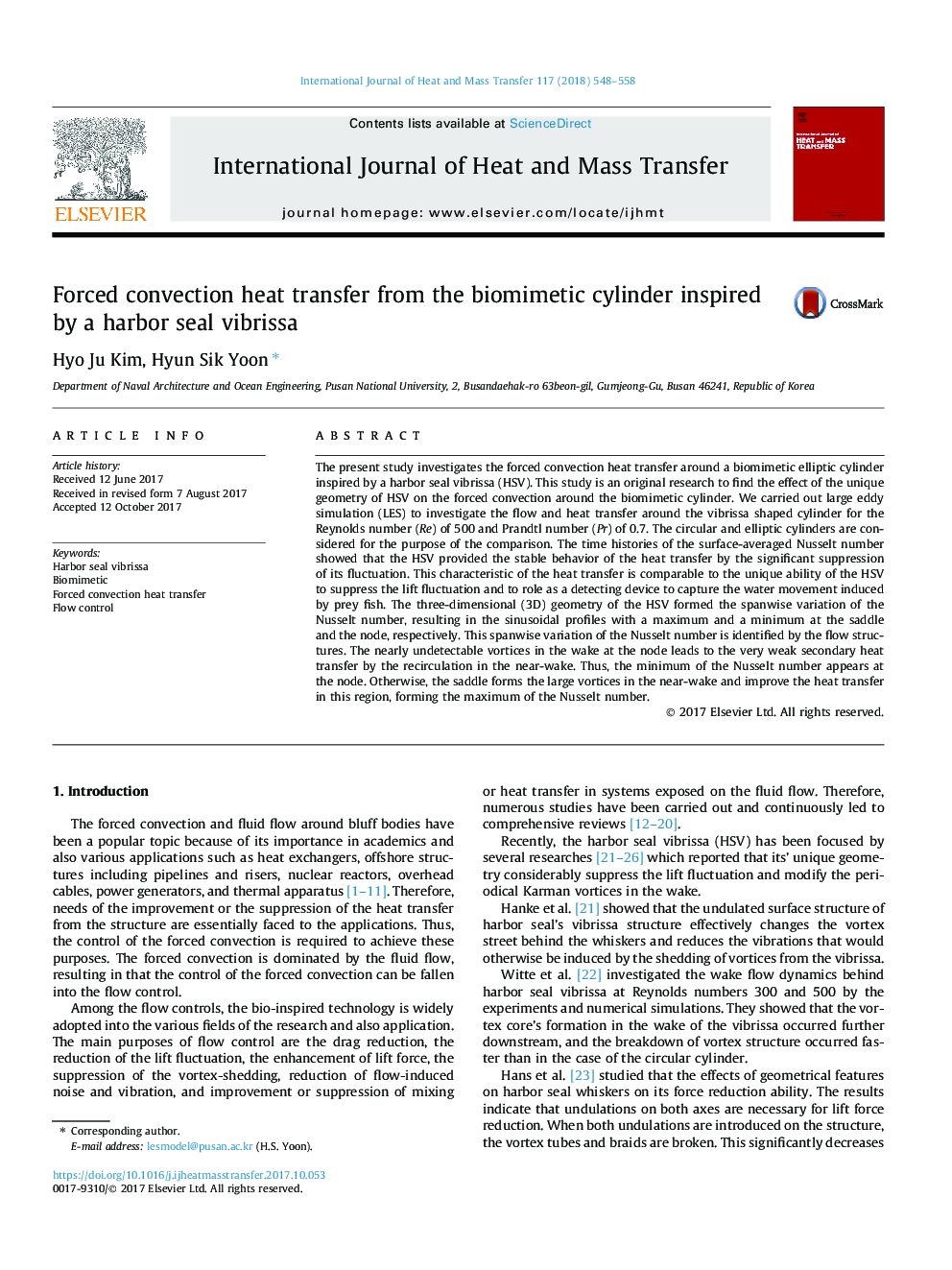| Article ID | Journal | Published Year | Pages | File Type |
|---|---|---|---|---|
| 4993423 | International Journal of Heat and Mass Transfer | 2018 | 11 Pages |
Abstract
The present study investigates the forced convection heat transfer around a biomimetic elliptic cylinder inspired by a harbor seal vibrissa (HSV). This study is an original research to find the effect of the unique geometry of HSV on the forced convection around the biomimetic cylinder. We carried out large eddy simulation (LES) to investigate the flow and heat transfer around the vibrissa shaped cylinder for the Reynolds number (Re) of 500 and Prandtl number (Pr) of 0.7. The circular and elliptic cylinders are considered for the purpose of the comparison. The time histories of the surface-averaged Nusselt number showed that the HSV provided the stable behavior of the heat transfer by the significant suppression of its fluctuation. This characteristic of the heat transfer is comparable to the unique ability of the HSV to suppress the lift fluctuation and to role as a detecting device to capture the water movement induced by prey fish. The three-dimensional (3D) geometry of the HSV formed the spanwise variation of the Nusselt number, resulting in the sinusoidal profiles with a maximum and a minimum at the saddle and the node, respectively. This spanwise variation of the Nusselt number is identified by the flow structures. The nearly undetectable vortices in the wake at the node leads to the very weak secondary heat transfer by the recirculation in the near-wake. Thus, the minimum of the Nusselt number appears at the node. Otherwise, the saddle forms the large vortices in the near-wake and improve the heat transfer in this region, forming the maximum of the Nusselt number.
Related Topics
Physical Sciences and Engineering
Chemical Engineering
Fluid Flow and Transfer Processes
Authors
Hyo Ju Kim, Hyun Sik Yoon,
